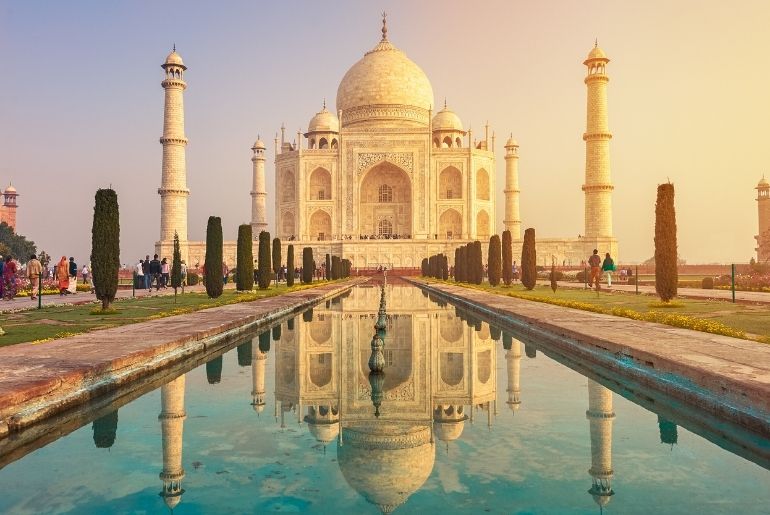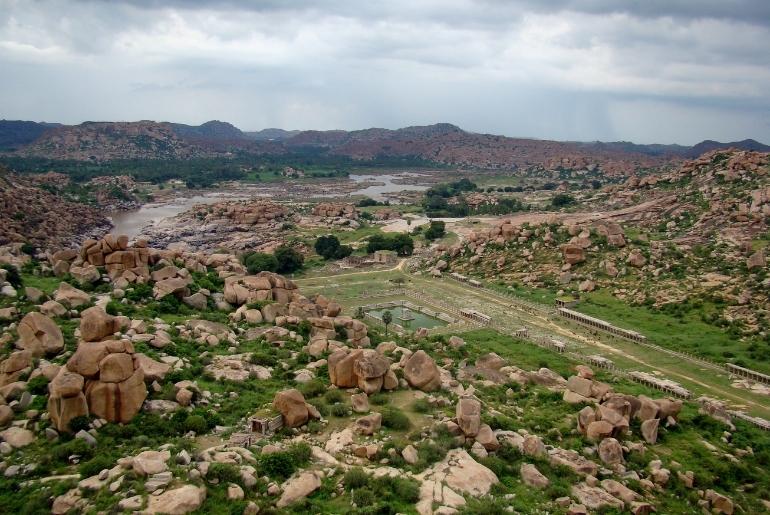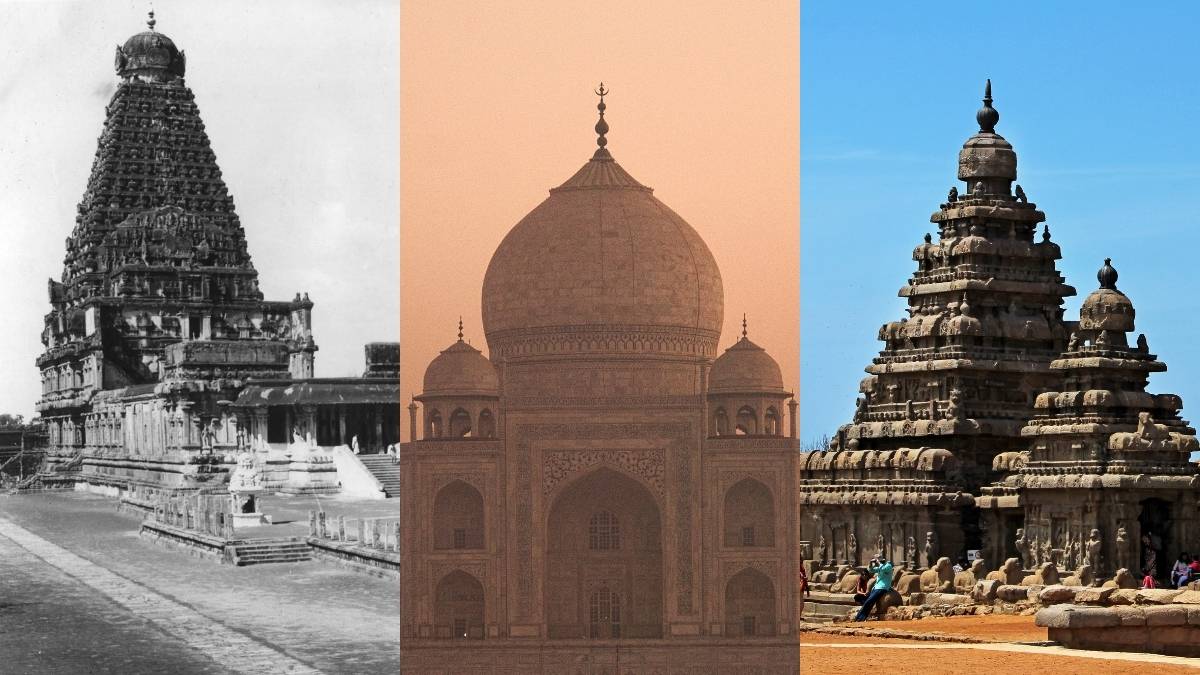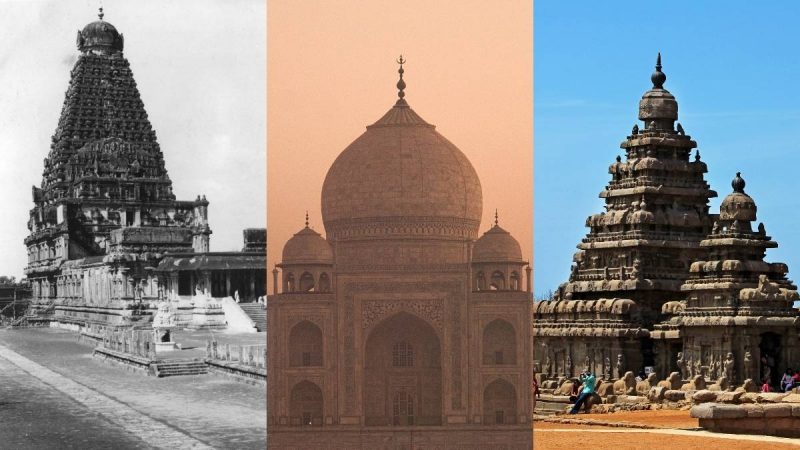India: land of ancient civilisations, culture, and so much heritage that a common man cannot even fathom. It is home to about 43 UNESCO (United Nations Educational, Scientific and Cultural Organisation) World Heritage sites. An additional 62 are on the tentative list. But sadly, these heritage sites are silently dying. Crumbling each day under the pressures of climate change, air pollution, foot traffic and more.
On April 18, we celebrated World Heritage Day. I spoke to domain experts and archaeologists to understand from them what is the current status of Indian heritage sites, how air pollution and climate change are proving to be extremely detrimental to their preservation efforts, and what could be a possible solution so that we don’t lose these physical reminders of the glorious past.
We’re Losing Our Taj And More Indian Heritage Monuments

In 1983, Agra Fort was first recognised as a World Heritage Site. Soon, the Taj Mahal, Ajanta Caves and Ellora Caves got their share of recognition as well. But over the decades, we are slowly losing our Taj.
“In India, nearly 40% of UNESCO World Heritage Sites face high climate risk, including flooding, heatwaves, and sea-level rise (CEEW, 2021). The Taj Mahal is a prominent example. Studies show that PM2.5 levels in Agra frequently exceed 100 µg/m³, causing the white marble to yellow and deteriorate due to acidic reactions (Archaeological Survey of India; TERI, 2018),” says Dr Prasad Anil Kulkarni, Program Director, Department of Environmental Studies, MIT World Peace University, Pune.
But Bonny Dhar, Deputy Head, Middle Years, Shiv Nadar School, Faridabad, also attributes it to pollutants and biological deposits from insects breeding in the Yamuna River.
The yellowing of the monuments is also called stone leprosy. “Studies by IIT Kanpur and Archaeological Survey of India (ASI) confirm that airborne particulate matter — especially carbon and sulphates — are causing surface discolouration. In 2018, the Supreme Court of India urged action, warning that the monument could be lost to pollution,” says Dr Rajeev Kumar P, Professor, Department of Civil Engineering, Alliance School of Applied Engineering, Alliance University.
Red Fort And Qutub Minar Are Now The Icons In The Smog
Often, cultural identifiers of the nation’s capital, the Red Fort, Qutub Minar and Humayun’s Tomb are fading into the smog. Delhi’s infamous pollution levels are deeply impacting these glorious monuments.
“Delhi’s pollution has left a black outer layer on the Red Fort and caused discolouration and surface damage on Qutub Minar. Research by the Indian National Trust for Art and Cultural Heritage (INTACH) shows that monuments in Delhi are ageing faster due to acid rain and smog from sulphur dioxide and particulate matter,” says Dr Rajeev.
Dr Prasad says, “Delhi’s Red Fort and Humayun’s Tomb suffer from high ambient air pollution levels. As Delhi often records PM2.5 levels over 300 µg/m³ in winter, it significantly damages the facades and intricate stonework (CPCB, 2022).”
Hampi Is Cracking Under Pressure

Image Courtesy: Wikimedia Commons/Ksuryawanshi
“Human activity is playing a major role in threatening our heritage sites. With rapid urbanisation around these Indian heritage sites, pollution is becoming a serious issue. The ancient stone structures of Hampi are being affected by increasing tourist footfall and surrounding urban growth,” says Dr Sheeba Chandar, Dean, School of Planning, Architecture and Design Excellence, Hindustan Institute of Technology and Science, Chennai.
Dr Rajeev says, “This once-majestic capital of the Vijayanagara Empire faces intense rainfall, flash floods, and humidity. Cracks are appearing in the Virupaksha Temple and stone chariot due to moss, waterlogging, and climate stress.”
Also in the Deccan belt, the Badami, Aihole, and Pattadakal Temple clusters are slowly fading. He says, “These sandstone and soft rock temples are highly sensitive to climate extremes. Frequent temperature shifts, humidity, and biological growth are eroding sculptures that have lasted over 1,300 years.”
Konark Sun & Other Temples Are Eroding
“The Konark Sun Temple in Odisha is at risk due to increased coastal salinity and cyclonic activity,” says Dr Prasad. And, Dr Sheeba, says it is also because of the “salt-laden winds and rising sea levels”. She adds, “Climate change only makes things worse. Rising temperatures, erratic rainfall, and humidity accelerate decay.”
Dr Rajeev highlights that “Brihadeeswarar Temple, Thanjavur, which is a Chola-era masterpiece, is suffering from acid rain and rising temperatures. Airborne pollutants combine with moisture, leading to the corrosion of granite carvings, while fluctuating temperatures cause thermal stress, resulting in micro-cracks across the structure.”
Not just the lasting effects of pollution, the Shore Temple at Mahabalipuram, could be submerged soon. “The Shore Temple faces increasing threats from rising sea levels and frequent cyclones, which cause salt crystallisation and internal deterioration of its granite carvings and foundational structure. The Archaeological Survey of India (ASI) has cautioned that continued sea level rise could lead to partial submersion of the monument,” he says.
What Are The Major Factors Causing Such Lasting Damage To These Indian Heritage Monuments?
Dr Shiv Kumar, Dean Academics, Medhavi Skills University Sikkim, explains, “A relentless pursuit of development, compounded by a rapidly growing global population, has led to widespread deforestation. The large-scale removal of forest cover has significantly impaired the planet’s ability to absorb carbon dioxide, resulting in a marked increase in its atmospheric concentration — from approximately 337 ppm to 422 ppm over the past five decades. As a major greenhouse gas, carbon dioxide is a key contributor to global warming.”
“Simultaneously, the world’s population has surged from 4.04 billion in 1975 to an estimated 8.36 billion by 2025. This exponential growth fuels the demand for food, housing, industrial infrastructure, employment, and transportation — each of which exerts further strain on natural ecosystems and alters the delicate composition of atmospheric gases. The resultant increase in emissions of sulphur oxides, nitrogen oxides, and carbon compounds not only pollute the air but, when combined with precipitation, lead to acid rain. This phenomenon poses a serious threat to cultural and historical landmarks,” he says.

Dhar adds, “These historical treasures are under increasing threat from two formidable forces: climate change and air pollution. Rising temperatures, unseasonal rains, and frequent flooding are accelerating the natural erosion of structures that have stood for millennia. At the same time, vehicular and industrial emissions are contributing to acid rain, chemical corrosion, and soot deposition, further impacting the condition of these monuments.”
Dr Ekta Singh, Assistant Professor, at Chitrakoot School of Liberal Arts, Shoolini University highlights, “Recent archaeological surveys in Dzamathang, a site in Spiti Valley, unearthed thousands of stone tools — some dating back tens of thousands of years. These include microlithic blades, scrapers, and even petroglyphs (rock carvings) believed to reflect early hunting scenes and symbolic motifs (Singh et al., 2021). This evidence shows that Spiti wasn’t a deserted mountain desert but a passageway for human migration, connecting India with Tibet and Central Asia. But with glaciers melting and unpredictable weather patterns rising, these fragile remnants of our past are beginning to disappear.”
Dr Chandar, “Tourism, while economically beneficial, adds pressure on heritage sites. Constant foot traffic can cause wear and tear, and the infrastructure created to support tourists often alters the site’s original character. In places like Jaipur’s Amer Fort or the crowded ghats of Varanasi, poor waste management and overcrowding contribute to environmental degradation.”
What Urgent Action Are Archaeologists And Experts Calling For?
Dr Kumar calls for a multifaceted approach, Dr Kulkarni urges urgent adaptive measures that should focus on climate-resilient conservation plans, and Dr Chandar wants everyone to rethink how we approach urban development, tourism, and pollution.
Dr Kumar outlines remedial measures:
- Impose environmental laws around heritage zones
- Create low-emission zones (LEZs) near monuments
- Implement climate-smart conservation methods
- Encourage sustainable tourism
- Including local communities in preservation and awareness
Some initiatives by the Indian government promote the preservation efforts of Indian heritage monuments and Indian culture. Like the “Adopt a Heritage scheme” wherein private and public groups with their Corporate Social Responsibility (CSR) can fund a monument and help preserve it.
The Archaeological Survey of India (ASI) has also created a “Must-See Monuments and Archaeological Sites of India” portal. It is a handy guide on each of the monuments, their history, promotion and preservation efforts.
Also Read: Matheran: Environmental Woes For Asia’s Only Automobile-Free Hill Station
Projects like Kashi Vishwanath Corridor (Varanasi), Mahakaal Lok (Ujjain), Ma Kamakhya Corridor (Guwahati), Chardham Road Project and Somnath and the Kartarpur Corridor are aimed at reviving key heritage sites and promoting cultural heritage.
But is all of this enough? Will all of this help us save the crumbling monuments? Tell us your thoughts in the comments section below.
Cover Image Courtesy: ASI, Canva Pro and Wikimedia Commons
For more such snackable content, interesting discoveries and the latest updates on food, travel and experiences in your city, download the Curly Tales App. Download HERE. First Published: May 28, 2025 2:17 PM





